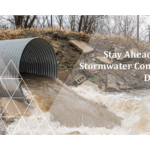
Phase 1 Environmental Site Assessments (ESAs) play a crucial role in assessing potential environmental risks associated with a property in McAllen. This comprehensive evaluation helps stakeholders, such as property owners, buyers, and lenders, make informed decisions regarding the property’s viability. Understanding the purpose, key components, process, regulatory framework, and importance of interpreting Phase 1 Assessment reports is vital for anyone involved in a property transaction.
Understanding Phase 1 Environmental Site Assessments
Purpose and Importance of Phase 1 Assessments
Phase 1 Assessments serve to identify any environmental risks that may pose a threat to human health and the surrounding ecosystem. They evaluate the historical and current use of the property, potential contaminant sources, and whether existing contamination may have migrated beyond the boundaries of the property in question.
By conducting Phase 1 Assessments, stakeholders can gain a comprehensive understanding of the property’s environmental conditions, allowing them to mitigate risks, comply with regulations, and preserve the long-term value of the property.
For example, imagine a company looking to purchase a piece of land for a new manufacturing facility. Before making such a significant investment, they would want to ensure that the site is free from any hazardous substances that could harm their employees or the environment. A Phase 1 Assessment would provide them with the necessary information to make an informed decision.
Key Components of Phase 1 Assessments
A Phase 1 Assessment typically involves several essential components, including a thorough site inspection and evaluation, historical review, and assessment of surrounding properties. These components are crucial in identifying potential environmental issues and ensuring compliance with regulatory guidelines.
During the site inspection, trained environmental professionals assess the property, looking for signs of contamination, such as storage tanks, chemical spills, or deteriorating buildings. They also inspect adjacent properties to evaluate potential sources of contamination that may affect the subject property.
Let’s say the site being assessed is located near an old industrial area. The environmental professionals would pay close attention to any signs of past industrial activities, such as abandoned factories or waste disposal sites. These could be potential sources of contamination that need to be thoroughly investigated.
The historical review phase involves researching past uses of the property, reviewing aerial photographs, fire insurance maps, and other records. This helps identify any activities or industries that may have contributed to environmental contamination.
For instance, if the property was previously used as a gas station, the historical review may uncover information about underground storage tanks that could have leaked harmful substances into the soil. This knowledge would be crucial in assessing the potential risks associated with the site.
Furthermore, assessing surrounding properties provides insights into potential cross-contamination risks, as contaminants can migrate from one property to another. This analysis helps stakeholders understand the broader environmental context surrounding the site.
Imagine the assessed property is located near a river. The assessment of surrounding properties would include evaluating any industrial facilities upstream that could potentially release pollutants into the water, affecting the subject property downstream. Understanding these interconnected risks is vital in making informed decisions about the property’s suitability for a particular purpose.
The Process of Conducting Phase 1 Assessments in McAllen
Initial Site Inspection and Evaluation
The Phase 1 Assessment process begins with an initial site inspection and evaluation. Environmental professionals visit the property to visually inspect and document any potential environmental concerns. They assess the property’s topography, geology, and hydrology, as these factors can impact contaminant migration.
The inspection involves carefully examining the property for evidence of previous or ongoing activities that could have caused contamination. This includes inspecting buildings, storage areas, waste disposal systems, and conducting interviews with property owners and occupants.
Historical Review of the Site
Conducting a thorough historical review of the property is another critical step of the Phase 1 Assessment process. Environmental professionals research the property’s history to identify any previous uses that could have led to contamination.
They review relevant records, such as land records, building permits, fire insurance maps, aerial photographs, and historical directories. This information helps establish the property’s past uses and activities, which may indicate potential sources of contamination or evidence of environmental stewardship.
Assessment of Surrounding Properties
Assessing surrounding properties is an important aspect of Phase 1 Assessments. Environmental professionals evaluate neighboring properties to identify potential cross-contamination risks or external sources of contamination that could affect the subject property.
They conduct research on adjacent properties, interview neighbors, review environmental permits and reports, and assess the topography and hydrology of the surrounding area. This assessment helps stakeholders understand the broader environmental context and potential risks related to the property.
Regulatory Framework for Phase 1 Assessments
Federal and State Environmental Laws
Phase 1 Assessments must comply with various federal and state environmental laws to ensure accuracy and reliability. These laws include the Comprehensive Environmental Response, Compensation, and Liability Act (CERCLA) and the Resource Conservation and Recovery Act (RCRA), among others.
Compliance with federal and state regulations ensures that the assessment process is thorough and meets the required standards. It also helps protect stakeholders from potential liability associated with environmental contamination.
Compliance with McAllen Local Regulations
In addition to federal and state regulations, conducting Phase 1 Assessments in McAllen requires compliance with local regulations. These regulations may include specific requirements for environmental assessments, such as reporting guidelines, permit applications, and remediation obligations.
Engaging an environmental professional who is familiar with both state and local regulations is essential to ensure compliance throughout the assessment process in McAllen.
Interpreting Phase 1 Assessment Reports
Identifying Potential Environmental Risks
Phase 1 Assessment reports provide stakeholders with a detailed overview of potential environmental risks associated with the property. These reports outline identified potential contaminant sources and evaluate the likelihood of contamination migration.
Environmental professionals perform a comprehensive analysis and provide their expert opinion on the environmental conditions of the site. This includes identifying areas of concern, potential remediation requirements, and recommendations for further investigation or assessment.
Recommendations and Next Steps
Upon reviewing the Phase 1 Assessment report, stakeholders can make informed decisions regarding the property. The report may include recommendations for further investigation, such as Phase 2 Assessments or specialized sampling and testing to confirm the presence or absence of contamination.
Based on the assessment findings, stakeholders can decide to proceed with the property transaction, negotiate appropriate purchase or lease terms, seek legal advice, or develop a remediation plan if necessary. The Phase 1 Assessment report serves as a valuable tool in facilitating these decisions and minimizing potential environmental risks.
The Role of Environmental Professionals in Phase 1 Assessments
Qualifications and Responsibilities
Environmental professionals play a vital role in conducting Phase 1 Assessments. They possess the necessary expertise, qualifications, and experience to evaluate potential environmental risks associated with a property.
These professionals are trained to assess environmental conditions, identify potential contaminant sources, comply with regulatory requirements, and provide comprehensive reports on their findings. Their responsibilities include conducting thorough site inspections, historical reviews, and assessment of surrounding properties, as well as interpreting and reporting assessment results accurately.
Selecting the Right Environmental Professional for Your Assessment
Choosing the right environmental professional is crucial to ensure the accuracy and reliability of the Phase 1 Assessment. When selecting an environmental professional in McAllen, consider their expertise, qualifications, experience, and knowledge of local regulations.
Seek professionals who possess certifications, such as the Environmental Professional (EP) or Certified Environmental Inspector (CEI), and have a proven track record of conducting successful Phase 1 Assessments. Collaborating with an experienced professional ensures that the assessment process is conducted in adherence to best practices and relevant guidelines.
In conclusion, Phase 1 Environmental Site Assessments in McAllen are essential for evaluating potential environmental risks associated with a property. By understanding the purpose, key components, process, regulatory framework, interpreting assessment reports, and the role of environmental professionals, stakeholders can make informed decisions, comply with regulations, and safeguard their investments. Conducting a thorough Phase 1 Assessment with the assistance of qualified environmental professionals is a proactive step toward sustainable and responsible property transactions.
Ready to ensure your McAllen property transaction is backed by a thorough and reliable Phase 1 Environmental Site Assessment? Look no further than ESE Partners. Our team of certified environmental professionals is equipped with the expertise and local knowledge to navigate the complexities of environmental risks and regulations. With a commitment to responsibly moving business forward and improving community quality of life, ESE Partners offers innovative solutions tailored to your unique needs. Don’t let environmental uncertainties hinder your investment. Request A Proposal today and partner with a firm that delivers honest, quality-driven results.








